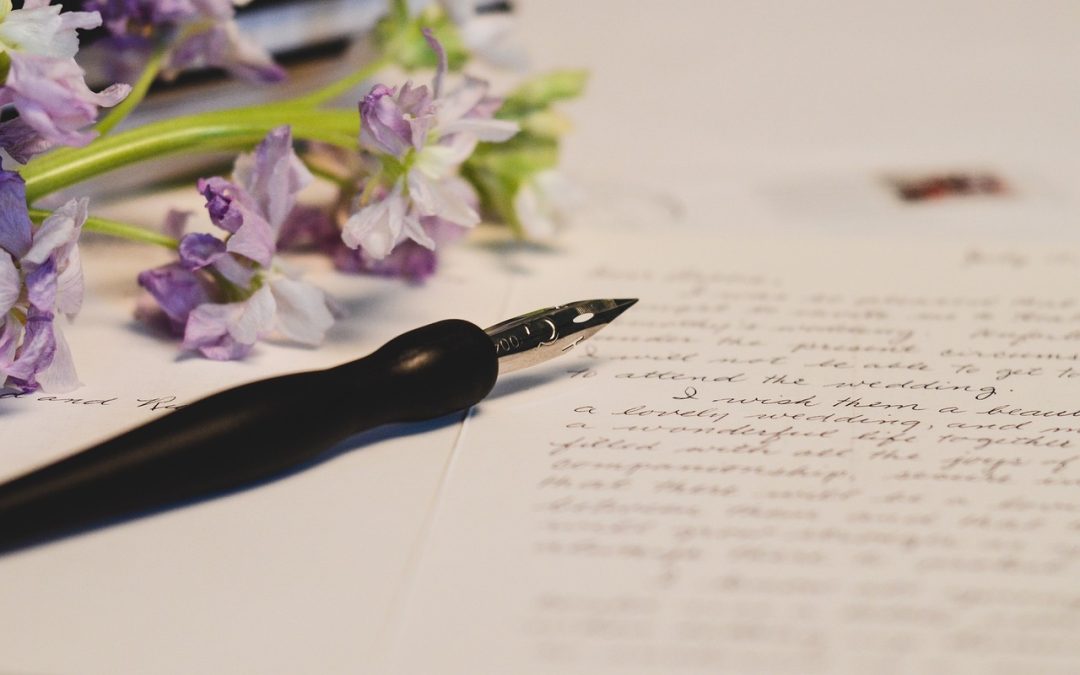
by Susan Sondheimer | Blog
As writers, we often focus on the words, and rightly so. But when it comes to self-publishing, the design of your book is just as crucial. A well-designed interior can make your book a joy to read, while a poorly designed one can be a turn-off. The good news is that you don’t need to be a professional designer to create a beautiful book. With the right tools and a bit of patience, you can do it yourself.
Understanding Book Design Basics
A lot of book design is about creating a clear hierarchy of information. You want your readers to be able to easily navigate your book, so it’s essential to understand how to use type, space, and graphics to guide them. Here are a few key things to keep in mind:
- Choose a clear, readable font for your body text. serif fonts like Garamond or Georgia are popular choices.
- Select a font for headings that contrasts with your body text. Sans-serif fonts like Arial or Helvetica work well.
- Use headings and subheadings to break up your text and create a clear structure.
- Leave plenty of white space (also known as negative space) to create a clean and uncluttered design.
Designing Your Book’s Interior
When it comes to designing your book’s interior, you have a few options. You can use a design template, which can be a great way to get started if you’re new to design. Canva is a popular choice, and they offer a range of book interiors you can use as a starting point. Alternatively, you can design from scratch using a tool like Adobe InDesign or Vellum.
If you’re new to design, it’s worth taking some time to experiment with different tools and techniques. You might be surprised at how easy it is to create a professional-looking design. And don’t be afraid to make mistakes – they’re all part of the learning process.
“The biggest risk is not taking any risk…” This quote from Mark Zuckerberg is especially relevant when it comes to DIY design. Don’t be afraid to try new things and take risks with your design. It’s often the best way to learn and create something truly unique.
One of the most important things to consider when designing your book’s interior is the paper it will be printed on. You’ll want to choose a paper that is high-quality and will showcase your design well. Paper weight is especially important – a heavier paper will be less prone to bleeding or show-through. Look for papers with a weight of at least 50lb (75gsm).
Putting it all Together
Once you’ve designed your book’s interior, it’s time to put it all together. Make sure to proofread your book carefully, checking for any errors or formatting issues. Then, export your book as a print-ready PDF. If you’re printing through a service like CreateSpace, they’ll provide you with a template and guidelines to follow.
If you’re new to self-publishing, it’s worth checking out our guide to Write, Design, Publish: Your Guide. It covers everything from writing and editing to design and formatting. And for more specific guidance on crafting a beautiful chapbook, take a look at Crafting Chapbooks that Connect.
Remember, DIY design is all about experimentation and taking risks. Don’t be afraid to try new things and make mistakes – it’s all part of the process. And most importantly, have fun! Designing your book’s interior is a chance to be creative and bring your words to life in a new way.

by Susan Sondheimer | Blog
As writers, we pour our hearts and souls into our work, hoping to connect with our readers on a deeper level. One of the most intimate ways to share our writing is by creating a chapbook – a small, carefully curated collection of poems, stories, or essays that can be held in the reader’s hands. But how do we craft chapbooks that truly connect with our audience?
Defining Your Chapbook’s Purpose
Before you start assembling your chapbook, take a step back and ask yourself what you want to achieve with this project. What theme or message do you want to convey to your readers? What emotions do you want to evoke? What kind of connection do you want to make with your audience? Knowing the purpose of your chapbook will help you stay focused and make intentional decisions throughout the creation process.
For example, if you’re writing about mental health, you might want to create a sense of community and understanding among your readers. If you’re writing about love and relationships, you might want to inspire your readers to reflect on their own experiences. Whatever your purpose, keep it at the forefront of your mind as you move forward.
Curating Your Content
With your purpose in mind, it’s time to select the pieces that will make up your chapbook. This can be a daunting task, especially if you have a large body of work to choose from. Here are a few tips to help you curate your content:
- Choose pieces that align with your chapbook’s purpose and theme.
- Select pieces that showcase your unique voice and style.
- Consider including a mix of shorter and longer pieces to create a sense of flow.
- Don’t be afraid to cut pieces that don’t contribute to the overall narrative of your chapbook. Remember, less is often more in a chapbook.
Remember, your chapbook is a curated experience, not a comprehensive collection of your work. Be intentional about what you include and how they fit together to create a cohesive whole.
Designing Your Chapbook
Once you have your content, it’s time to think about the physical design of your chapbook. This is where you can really let your creativity shine! From the typeface to the paper weight, every decision you make will contribute to the reader’s experience.
are a few design tools and resources you might find helpful:
- Vellum: A design software specifically tailored for book design.
- Canva: A user-friendly design platform with a wide range of templates and design elements.
- Paper weight: Consider using a high-quality paper that will add to the tactile experience of your chapbook. Look for papers with a minimum weight of 80gsm.
- Binding methods: Consider using a perfect bind or a stapled binding to give your chapbook a professional finish.
Designing your chapbook is not just about aesthetics – it’s also about creating a cohesive and professional-looking product that will make your readers take you seriously as an author. For more guidance on self-publishing and design check out Write, Design, Publish: Your Guide.
As you design your chapbook, remember that the physicality of the book is just as important as the words inside. Take your time, and have fun with the process!
“The road to hell is paved with adverbs, and the road to good writing is paved with the meticulous attention to detail.” – Stephen King
In the end, crafting a chapbook that connects with your readers takes time, effort, and dedication. It takes a willingness to be vulnerable and share your true self with the world. But the reward is well worth it – the chance to create a lasting connection with your readers, and to leave a lasting impression on the world.
So go ahead, take the leap and start crafting your chapbook today. Remember, you don’t have to do it alone. There are resources available to help you along the way. Check out Self-Publishing for Introvert Writers for more guidance on the self-publishing process. And most importantly, don’t be afraid to Write Fearlessly and share your work with the world.

by Susan Sondheimer | Blog
As writers, we often dream of holding our published book in our hands, feeling a sense of pride and accomplishment. However, the journey from writing to publishing can be daunting, with many unknowns and uncertainties along the way. But fear not, dear writer! With the right guidance and tools, you can navigate the process with ease and confidence. In this comprehensive guide, we’ll take you through the essential steps of writing, designing, and publishing your book, helping you to bring your vision to reality.
Write Your Book
The first and most crucial step in publishing your book is, of course, writing it. It may seem obvious, but it’s essential to have a well-written, edited, and polished manuscript. This is where your writing journey begins.
Start by setting a realistic goals and deadlines for yourself. Break down your writing process into manageable chunks, making it easier to stay on track. Create a writing schedule and stick to it as much as possible.
When it comes to writing, don’t worry too much about grammar, spelling, or sentence structure at this stage. Just on getting your ideas down on telling a compelling story or conveying your message in a clear and concise manner.
For those of you who are introverted writers, self-publishing can be a game-changer. You can maintain creative control while avoiding the traditionally daunting publishing process. Check out our article on Self-Publishing for Introvert Writers to learn more.
Design Your Book
Once your manuscript is complete, it’s time to think about the visual aspects of your book. This is where design comes in. You’ll need to decide on the layout, font, and overall aesthetic of your book.
For chapbook publishing, you’ll want to consider the size, paper type, and binding method. Chapbooks are typically small, saddle-stitched books, so you’ll want to choose a paper weight that’s suitable for this type of binding.
If you’re not design-savvy, don’t worry. There are many tools and resources available to help you design a professional-looking book. Canva is an excellent option for book design, offering a wide range of templates and design elements.
For a more advanced and polished look, you might consider using Vellum, a powerful book design software specifically created for authors.
Publish Your Book
Now that your book is written and designed, it’s time to publish! You have several options for publishing, including traditional publishing, self-publishing, and print-on-demand (POD) services.
If you’re considering self-publishing, our article on Write Fearlessly: DIY Publishing offers valuable insights and tips to help you navigate the process with confidence.
Whichever route you choose, make sure you’ve edited and proofread your manuscript multiple times to ensure it’s error-free and polished.
Getting your book into the hands of readers is an exhilarating experience. Seeing your work on online retailers, such as Amazon, or on the shelves of local bookstores, is a truly fulfilling moment.
“The road to success is always under construction, but with persistence, determination, and a willingness to learn, you can achieve your publishing goals.”
Additional Tips and Resources
To help you on your publishing journey, we’ve compiled a list of additional tips and resources:
- For chapbook publishing, check out our comprehensive guide, Chapbook Publishing 101: Get Started Today, for a step-by-step guide to publishing your chapbook.
- Use a formatting template to ensure your manuscript is correctly formatted for publishing.
- Invest in a good editing software, such as Grammarly or ProWritingAid, to help with the editing process.
- Consider hiring a professional editor or proofreader to review your manuscript before publishing.
Create a marketing plan to promote your book, including social media, email marketing, and book signings.
With these steps, tips, and resources, you’ll be well on your way to publishing your book. Remember to stay focused, persistent, and patient throughout the process. And most importantly, keep writing, designing, and pushing your creative boundaries.

by Susan Sondheimer | Blog
As an introvert writer, you’re not alone in your creative journey. In fact, many famous authors, such as J.K. Rowling, are self-proclaimed introverts who have found immense success through self-publishing. The idea of promoting your work, networking with others, and navigating the publishing industry can be daunting, especially for those who prefer quieter, more low-key environments. But fear not, dear introvert writer! Self-publishing is an excellent way to share your work with the world while maintaining control over the process and minimizing the need for intense social interactions.
Embracing Your Introverted Nature
One of the most significant advantages of self-publishing is that it allows you to work at your own pace, in the comfort of your own space. You can create your schedule, set your deadlines, and work in a way that suits your introverted personality. Gone are the days of meeting with publishers, agents, or critics who might drain your energy or stifle your creative voice.
Moreover, self-publishing enables you to connect with your target audience directly, without the need for intermediaries. You can build a loyal following of readers who appreciate your unique voice and style. This connection can be incredibly fulfilling, especially for introverts who often prefer deeper, more meaningful relationships.
“The highest form of research is to get your ideas out in the world and let people respond.” ― Chris Guillebeau
Practical Steps for Self-Publishing Introverts
To get started, it’s essential to have a solid manuscript ready. If you’re struggling to get your chapbook manuscript in order, consider checking out our guide to Chapbook 101: Breathing Life into Your Manuscript. This resource will help you refine your writing, structure, and editing process.
Once you have a polished manuscript, it’s time to think about formatting and design. For chapbooks, it’s essential to choose a layout that complements your poetry or prose. Vellum is an excellent tool for formatting your book, as it’s user-friendly and offers various templates and customization options. You can also experiment with design elements like typography, colors, and images to enhance the overall aesthetic of your chapbook.
When it comes to printing and binding, you have several options. You can opt for digital printing services like IngramSpark or CreateSpace, which offer affordable and convenient solutions. Alternatively, you can explore local printing services that specialize in chapbooks and offer unique paper types, binding methods, and finishing options. For example, you might prefer a 100% recycled, 80-weight cotton paper with a hand-stitched binding.
After you’ve printed and bound your chapbook, it’s time to share it with the world. Here are some tips to get you started:
- Build an online presence through social media platforms, blogs, or websites. Share updates, behind-the-scenes insights, and teasers to generate interest in your work.
- Identify your target audience and engage with them directly. Attend writing workshops, conferences, or online forums where your ideal readers congregate.
- Collaborate with fellow writers, reviewers, or influencers in your niche. This can lead to valuable networking opportunities, reviews, and cross-promotions.
- Optimize your chapbook’s visibility by listing it on platforms like Amazon, Goodreads, or LibraryThing. Use relevant keywords, tags, and descriptions to attract potential readers.
Conclusion
As an introvert writer, you have a unique advantage in the self-publishing world. By embracing your personality, working at your own pace, and leveraging the right tools and resources, you can create a successful chapbook that resonates with your target audience.
Remember, self-publishing is a journey, not a destination. It takes time, effort, and patience to build a loyal following and create a chapbook that wows. But with persistence and dedication, you can achieve your publishing goals and share your unique voice with the world. To get started, consider exploring our guide to Chapbook Publishing 101: Get Started Today. This comprehensive resource will help you navigate the world of chapbook publishing and set you on the path to success.
So, dear introvert writer, don’t let fear or self-doubt hold you back. Take the leap, and start creating your chapbook today. The world is waiting for your unique voice and perspective!

by Susan Sondheimer | Blog
As writers, we’re no strangers to fear. Fear of rejection, fear of failure, fear of being vulnerable – the list goes on. But what if I told you that DIY publishing can be a liberating experience that helps you overcome these fears and connect with your audience in a more meaningful way? It’s time to write fearlessly and take control of your publishing journey.
Embracing the DIY Spirit
Traditional publishing routes can be daunting, and it’s easy to get caught up in the uncertainty of whether your work will be accepted. But DIY publishing offers a refreshing alternative. By taking ownership of the process, you can focus on what matters most – your writing.
Remember, DIY publishing isn’t about being amateurish or unprofessional. It’s about being proactive, taking calculated risks, and being open to learning and growth. As the renowned poet and publisher, Diane di Prima, once said:
The only war that matters is the war against our own worst instincts, our own self-doubt, and our own lack of confidence.
When you decide to DIY publish, you’re not only writing fearlessly but also committing to self-reflection and improvement. You’re acknowledging that your work is valuable and deserving of an audience.
Laying the Foundations for Success
Before diving into the world of DIY publishing, it’s essential to prepare your manuscript. This involves refining your writing, and editing until you’re confident that your work is polished and error-free. If you’re new to chapbook publishing, start by learning the basics in our guide: Chapbook Publishing 101: Get Started Today.
Once you have a solid manuscript, you can begin thinking about design, formatting, and printing. For chapbooks, it’s crucial to select a layout that enhances the reading experience. Tools like Vellum, Canva, or Adobe InDesign can help you create a visually stunning book. Don’t be afraid to experiment and find the perfect design that complements your writing.
Printing and Binding: The Final Touches
With your design and layout in place, it’s time to consider paper quality, binding methods, and printing options. For chapbooks, you may want to opt for a higher weight (around 80-100 gsm) to ensure the pages feel substantial and luxurious. Binding methods like saddle-stitching or Coptic binding can add a professional touch to your book.
When it comes to printing, you can choose between digital printing or offset printing. Digital printing is ideal for small batches, while offset printing is more cost-effective for larger quantities. Research local printers or online services that cater to chapbook printing, such as Mixbook or IngramSpark.
To ensure your chapbook wows, pay attention to the following details:
- Use high-quality paper that feels nice to the reader.
- Select a font that’s clear, readable, and consistent throughout the book.
- Incorporate white space effectively to create a visually balanced layout.
- Use headings, subheadings, and other typographical elements to create hierarchy and visual interest.
By focusing on these details, you’ll create a professional-looking chapbook that showcases your writing and connects with your audience.
Conclusion: Write Fearlessly, Publish Confidently
DIY publishing is not about being perfect; it’s about being brave. It’s about taking ownership of your writing, embracing imperfections, and learning from your experiences. When you write fearlessly and publish confidently, you open yourself up to new opportunities, connections, and growth.
Remember, your writing matters, and it deserves to be shared with the world. So, take the leap, and start your DIY publishing journey today. For more guidance on creating a stunning chapbook, explore our resources on Create a Chapbook That Wows and Chapbook 101: Breathing Life into Your Manuscript.





